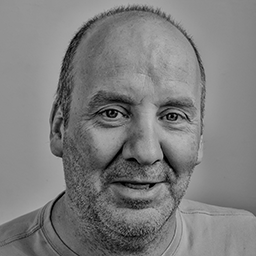New Jersey-based Atlantic Health System is collaborating with a startup company called Dimer Health that is using technology to fill the clinical care gaps that exist for patients after a hospital discharge and reduce readmission rates. Steve Sheris, M.D., executive vice president, chief physician executive of New Jersey-based Atlantic Health System and president of Atlantic Medical Group, and Dimer Health founder Caroline Hodge, M.S., PA-C, M.B.A., recently spoke with Healthcare Innovation about their goals.
Hodge, a cancer survivor herself, said her personal experiences with post-discharge care gaps as well as her own career as a clinician inspired her to create a solution addressing gaps in post-discharge care. Dimer offers remote proactive follow-ups and monitoring to reduce the chances of patients returning to the hospital.
“We say that just like the patient goes from the emergency room to being admitted to the hospital, and the hospitalist takes care of you in the hospital, the hospital can then hand off to the transitionist, and we can care for the patient until we can hand them back off to their primary care doctor,” Hodge explained, “so that there’s never a time when the patient isn’t having their hand held.”
Besides working with clinical groups in New Jersey, Hodge said Dimer plans to expand into a few more states over the next couple of months.
Healthcare Innovation: Caroline, could you talk about your work with Atlantic Health System?
Hodge: We’ve been working with physician groups that are within Atlantic, and we’ve been seeing patients and growing within different service lines, and we have had some really great outcomes, great patient stories. Overall, with the patients that we’ve seen there, we’ve been able to reduce readmissions over 65%, and the patients really love it. Our Net Promoter Score is incredibly high. It’s 95. We get comments from people who say, why hasn’t care always been like this?
Being able to use the technology that we have to identify patients who are most at risk to personalize the care plans for them, and identify the patterns who are most likely going to have escalations or decompensation of their condition, and then be able to quickly act upon it before they reach a certain threshold of exacerbation is how we’ve gotten to those outcomes.
We really try to make access easy for them with this predictive, proactive outreach. So when we send these check-ins to them, and they will answer and say, ‘You know, I feel a little more tired today,’ or ‘I think I might have a fever,’ we can dial up the intensity of what we’re doing or dial it down based on their response. So instead of having a stack of papers that’s very diagnosis-based, we can really customize that plan and adjust it hourly if needed for that patient and keep them out of the hospital.
HCI: Dr. Sheris, could you talk about why Atlantic Health System was interested in working with a company such as Dimer Health?
Sheris: We want to invest in preserving health and wellness upstream away from the more traditional sites of care such as hospitals, so remaining connected with our patients at all times is one of our priorities. This strategy is unique, because most health systems are still aligning themselves with the way healthcare is paid for in this country. It’s segmented, fragmented, episodic and transitional, rather than continuously wrapped around the patient. It’s oriented to sites of care and not the person getting the care.
We’ve been transitioning our own healthcare delivery system to remain connected with the patient outside the traditional sites of care. Dimer Health can provide technology-based solutions at scale in those domains of care where patients may be most vulnerable in the transitions of care.
Again, the healthcare system in this country, for the most part, still pays for episodes of transactions, and it doesn’t pay for the connective tissue of care that keeps people healthy and well, so in the transitions where people are most vulnerable. If they’ve been hospitalized and until they’ve gotten back to connect with their clinician, this is where entrants like Dimer can help organizations like Atlantic Health System, because we haven’t built that infrastructure yet. We’re earlier in our own journey, because that’s not what the healthcare ecosystem has paid for.
HCI: But could solutions like this fit in as the health system transitions to more value-based care and get paid less in the episodic way you described?
Sheris: Yes. We’re firmly committed to driving the commercial carriers and participating in government programs that pay for outcomes-based reimbursement, keeping people healthy and well and avoiding high-cost care. We’re now six hospitals, with 400 sites of care. We’re really good at delivering superior outcomes in those sites of care. What we are trying to do is leverage those best outcomes, move them upstream in the care continuum, and make them continuous and durable, investing in health and wellness. We’re trying to build out at scale the capacity to care for people in non-traditional sites of care. Technology affords us the opportunity to achieve that scale without bricks and mortar and without human capital, which is in limited supply. That’s why we’re looking for people who are committed to helping us on that journey, and we will work with them and collaborate with them, as long as the information that they gather about patients remains in the ecosystem. We hardwire that, and it moves with the patient. It doesn’t stay in the silo of care where it was delivered.
HCI: What’s the business model or relationship between a health system like Atlantic and Dimer. Does Dimer bill the insurers directly or do they share savings?
Sheris: There’s not an exchange of money between Dimer and Atlantic. Like any group that practices in our clinically integrated network, we want to make sure the information stays with the patient. So we’ve been working with Dimer making sure that our information systems communicate with each other. Otherwise, it just becomes another site of fragmentation that worsens the problem. Care that we can’t see for patients that we are responsible for in our value contracts is not helpful to us. It actually can result in duplication of care and confusion to the patient, if you have multiple people looking in on the patient in their healthcare journey. So right now, we’re making sure that the communication channels are tight and automated, and making sure that the primary care clinician who’s responsible for the longitudinal care of the patient in our value contracts is aware of every medical intervention and social intervention, for that matter, that’s being extended on behalf of the patients.
Hodge: We function as a medical practice and we bill for our services.
HCI: So if I’m one of these post-discharge patients, and I have a concern and pick up the phone and call Dimer, who is on the other end? Is it a nurse or a PA?
Hodge: You might talk to one of what we call our clinical concierges, an administrative person. If you have a clinical question, you’ll get connected to a PA, nurse practitioner or a physician.
HCI: Could Atlantic be rewarded in its value-based care contracts if readmissions go down through this relationship with Dimer?
Sheris: Yes. We’re collaborating to offer the best care for the patient. We can’t all be competing around the patient. We have to be collaborating for the best patient outcomes. For patients for whom we bear financial risk on the total cost of care, yes, we benefit from Dimer doing their job better. We benefit from other independent groups that practice in our clinically integrated network doing their job better. So it’s the same conversation. Dimer has shown an ability to be responsive, to be able to scale up to use information to deliver what the patient needs, when they need it, wherever they need it.
HCI: Could this have an impact on the perception of whether people need to go to a post-acute care setting rather than going home after a hospital stay if you know you have more high-touch care available?
Sheris: Yes. Just because people go to a post-acute setting doesn’t mean the care is connected, right? It’s about the connection. So it’s just another form of post-acute care. We’re also expending efforts with those facility-based providers along the same lines. We tell them that you need to communicate with us. We are entrusting you with the care of a patient that we bear ethical, moral and financial responsibility for. So please tell us what you’re doing. Call us when something is not right, verify the care pathway with us. So it’s a lot of conversations, and a lot of blocking and tackling and pick-and-shovel work to actually connect all the different domains of care.
Hodge: To your question about that decision of where to discharge, we definitely see ourselves as a tool in that toolbox, as another option. A hospitalist might say if I knew this patient was going to have their hand held and be seen within 12 hours and maybe again the next day, I would feel more comfortable sending them home. If I knew they were going to be able to have patient tests followed up on, I’d want to send them home. We want to be a resource to help facilitate those decisions, too.







